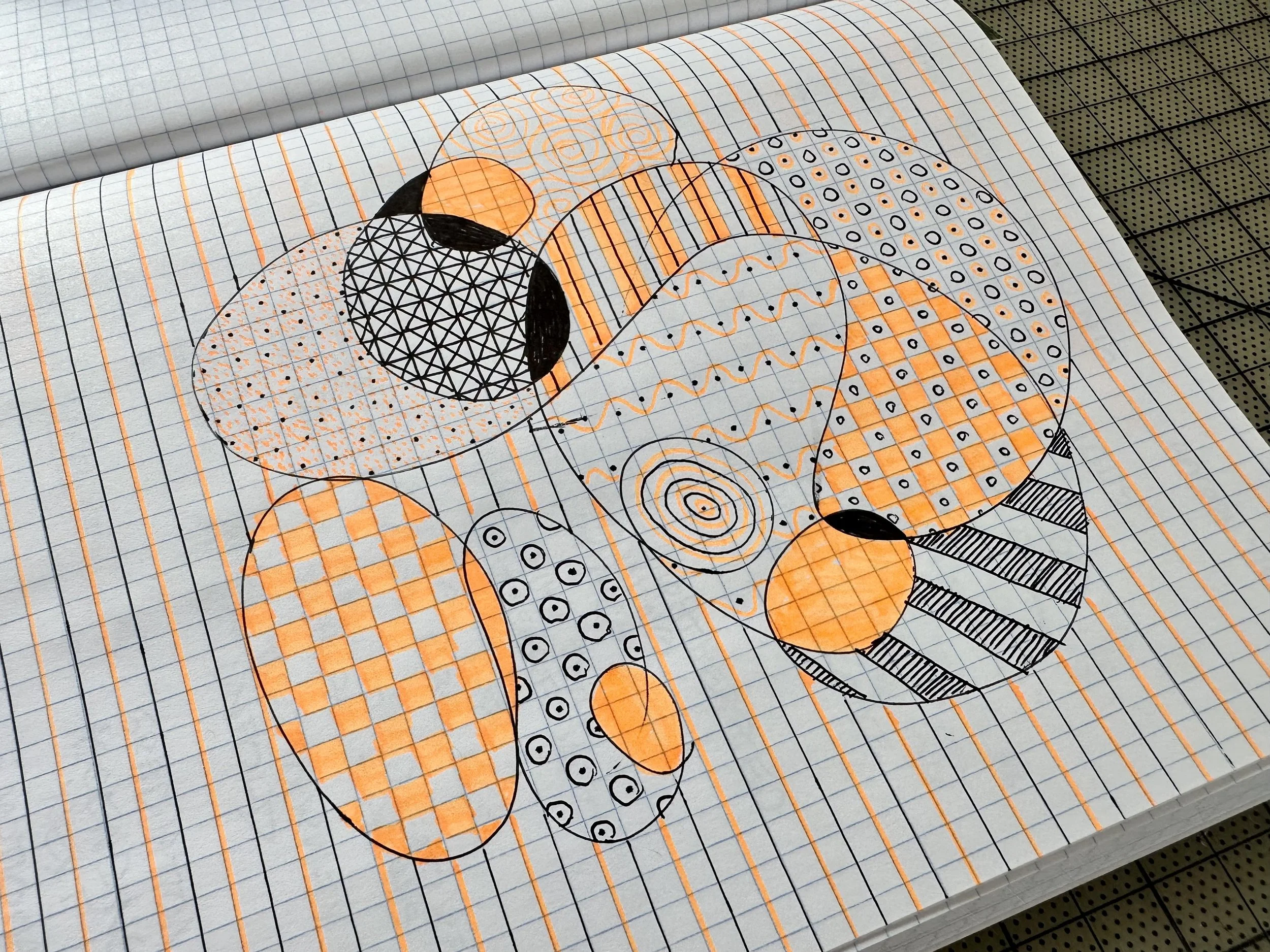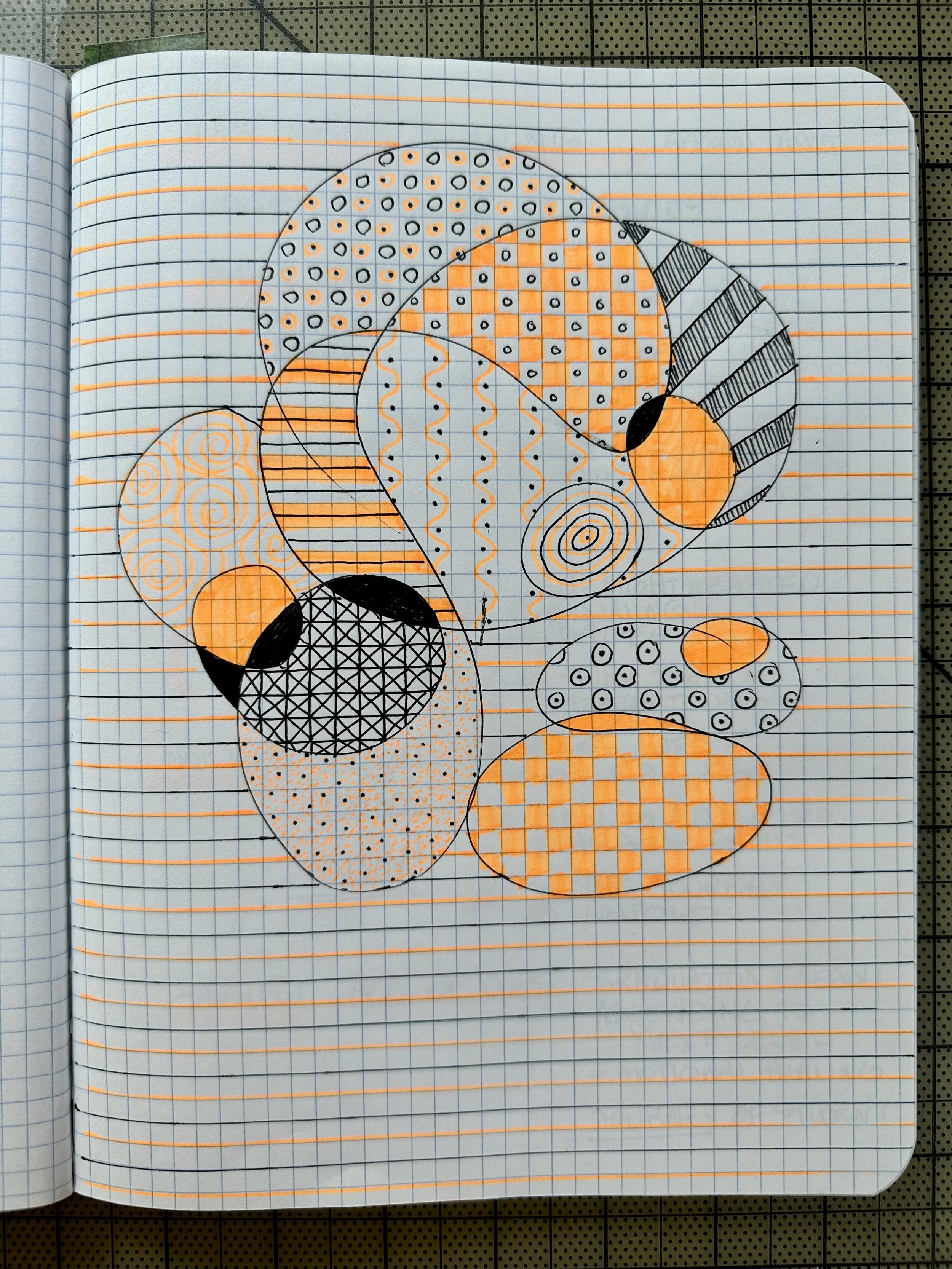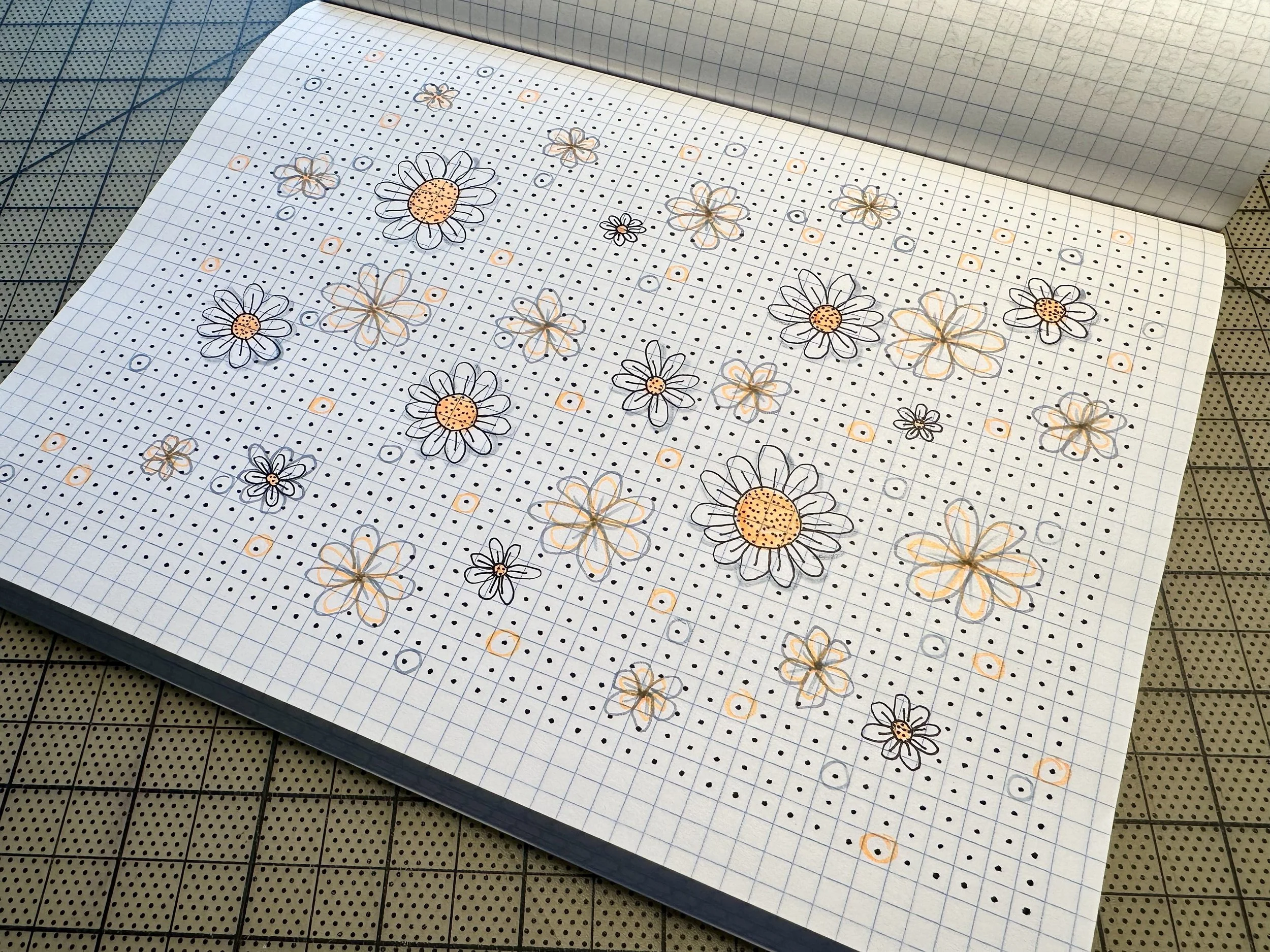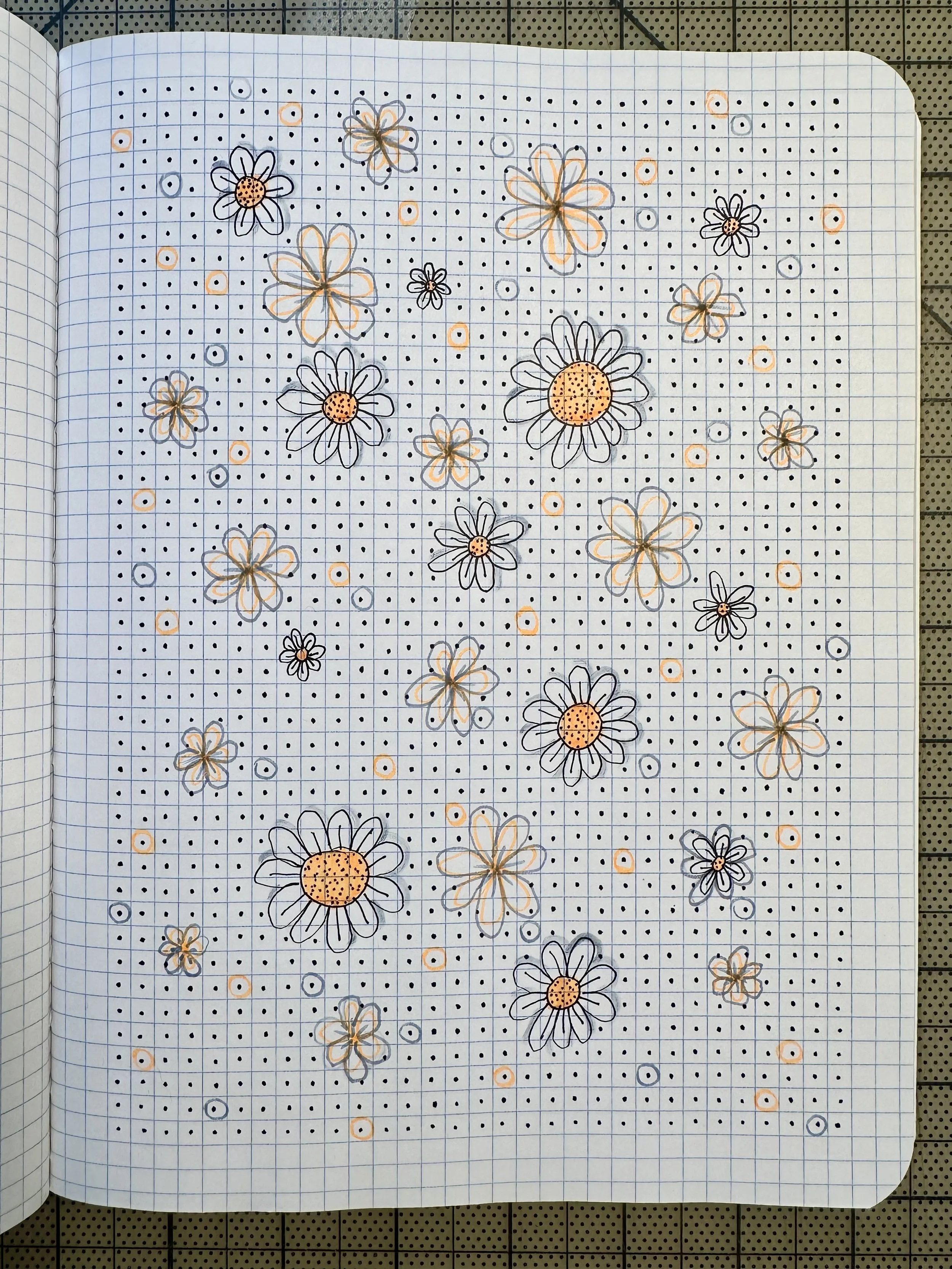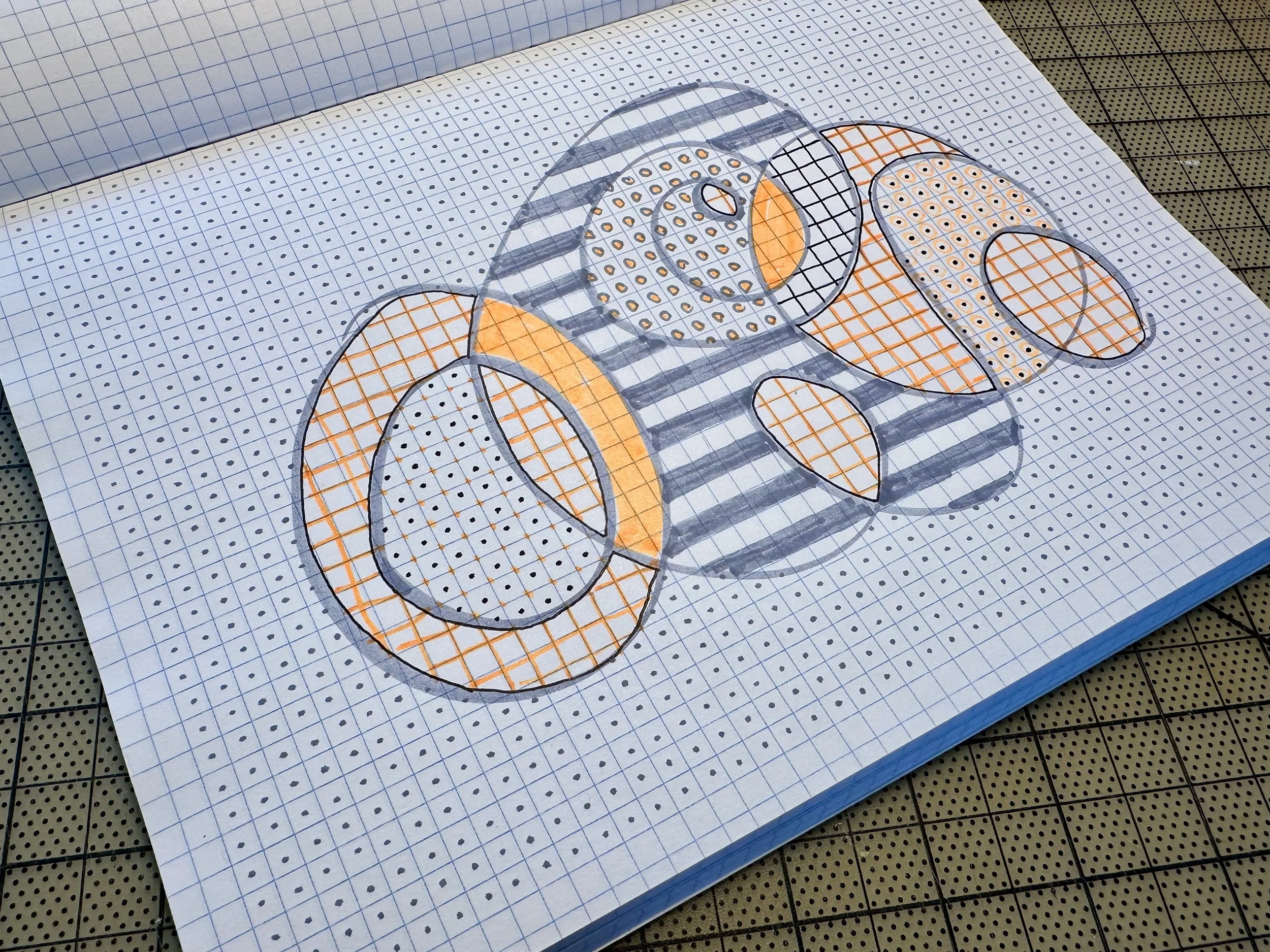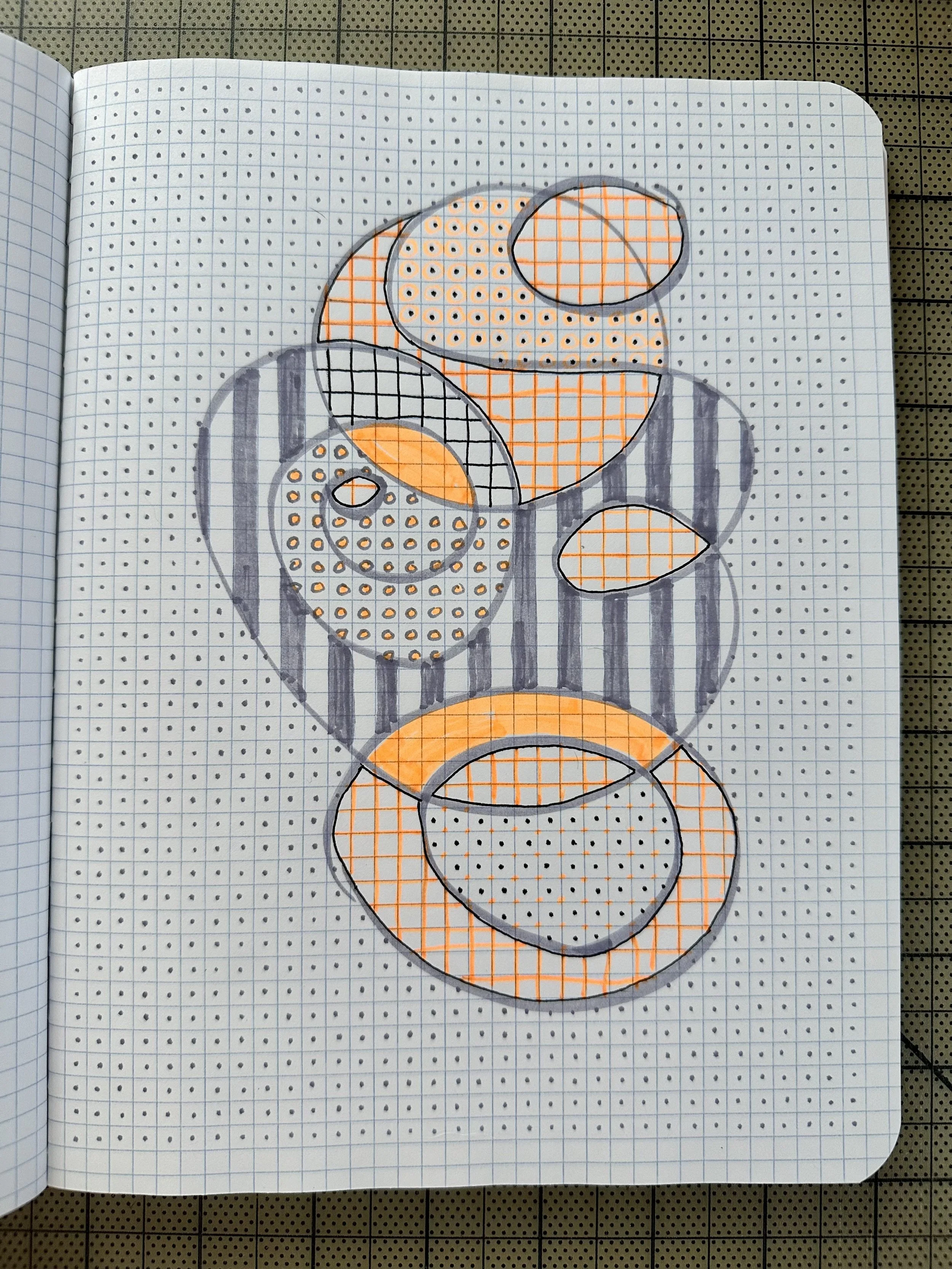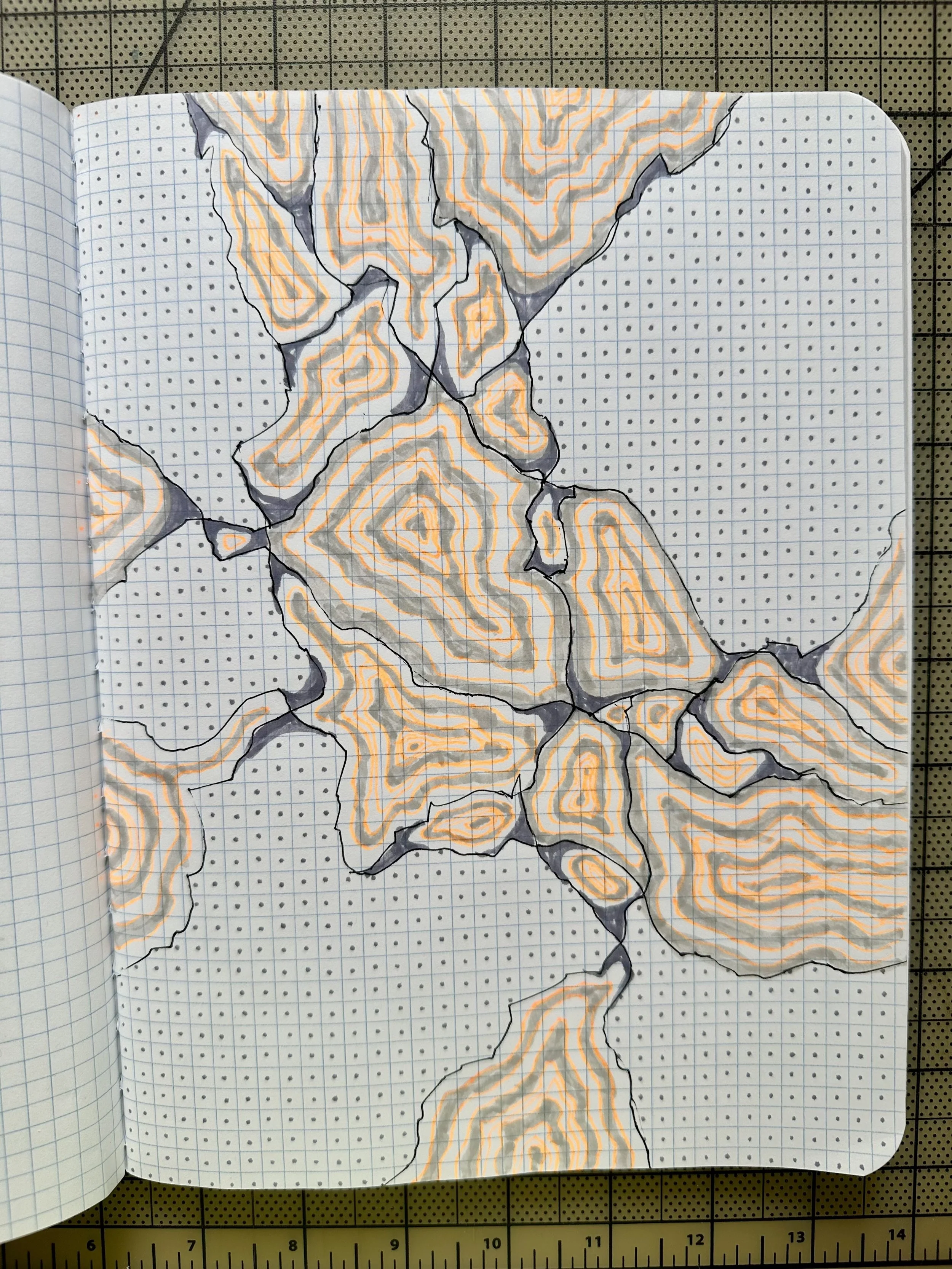Make a Mark
Drawing, doodling, and visual journaling – these simple, playful creative activities are not just for kids or passing time. Research shows that putting pen or pencil to paper in a free-form way can be acts of mindfulness, with benefits for emotional well-being, focus, and creativity. Whether you’re filling a sketchbook, doodling in the margins, or keeping an art journal, you are doing your brain and mood a world of good. I have started an evening doodling practice using the most inexpensive materials I have at hand: pen, highlighter, and cheap notebook. It has lifted my mood and delighted my mind.
Drawing as Meditation
I have been leading Drawing Meditation workshops and retreats since 2013. The participants engage in a series of mark-making exercises that induce a meditation-like state. This reduces stress and anxiety. In a study by Curry and Kasser, they found that coloring a complex geometric pattern (like a mandala) for 20 minutes significantly lowered anxiety levels. The structured, repetitive nature of such drawing may “induce a meditative state” that quiets the mind and helps suspend inner dialogue – much like traditional mindfulness practices. This meditative immersion in art is often experienced as calming: even five minutes of visual journaling (drawing combined with a little writing) can start to boost your feel-good brain chemicals like dopamine and serotonin, contributing to a greater sense of well-being.
You don’t have to have any art-making experience to reap the benefits. A Drexel University study showed that 45 minutes of free-form art-making (using markers, paper, clay, or collage) lowered the stress hormone cortisol in 75% of participants, indicating an impressive drop in stress. Many participants described the experience as “very relaxing” and reported feeling less anxious and more able to let go of worries after just a few minutes of drawing. This aligns with other findings that art activities can help organize and calm inner chaos, allowing people to express emotions without words and attain emotional relief. In fact, therapists are starting to call doodling or coloring “meditation with a pen or pencil” because it keeps your hands busy and mind gently focused, helping everyday stressors fade away.
The mood benefits of drawing are evident in children as well. Research with kids aged 6–12 found that spending a few minutes drawing can significantly improve short-term mood when the drawing serves as a positive distraction from negative feelings. Children who drew something fun or interesting (as opposed to venting their feelings on paper) became highly absorbed in the activity and felt happier afterward. This suggests that the absorbing “flow” of drawing (getting lost in sketching a fantasy scene or coloring a pattern) helps replace sad or anxious thoughts with more pleasant ones. Indeed, children naturally turn to art in difficult times (after upsetting events or trauma) as a way to cope and self-soothe. In clinical settings, art journaling (drawing one’s feelings) is used as a tool to regulate emotions, providing a safe outlet to “tell without talking” and release stress on the page. These practices work for all ages.
Put into Practice
If you’re looking for a playful, joy-focused way to step away from screens and devices, consider keeping a sketchbook handy. The next time you feel stressed or stuck, try one of these tips (no artistic skill required!):
Take a Doodle Break: Pause and fill a corner of a page with swirling patterns or little cartoons. This “mental recess” can help clear stress and reboot your focus. You may return to your task feeling more relaxed and alert.
Color or Draw to Relax: Print a mandala or draw abstract shapes and color them in. Structured coloring of repeating patterns can quiet your mind and has been shown to significantly reduce anxiety. Let the patterns and colors absorb your attention.
Start a Visual Journal: Each day, sketch something that represents your mood or highlights of your day (even a simple symbol or stick figures) and add a word or two about it. Over time, this habit can become a treasured ritual that helps you process emotions and cultivate gratitude. Remember, it’s for your eyes only – no judgment, just free expression.
While You’re Waiting: Next time you’re waiting at the Doctor’s office, car service center, or in some other situation, pull out a pen and some paper and start making marks.
Sources:
Drake, J. E., (2021). Frontiers in Psychology, 01 February 2021, Volume 12 - 2021. https://doi.org/10.3389/fpsyg.2021.622927
Warson, E. (2022). Visual Journaling: Health Promotion through Art and Drawing. GoodTherapy Blog. https://www.goodtherapy.org/blog/visual-journaling-health-promotion-art-drawing
Curry, N. & Kasser, T. (2005). Can Coloring Mandalas Reduce Anxiety? Art Therapy, 22(2), 81-85. https://files.eric.ed.gov/fulltext/EJ688443.pdf
Hi there! I’m Pattie Belle Hastings.
But you can call me PB. I am a speaker, facilitator, designer, content creator, and professor. I facilitate teams and groups as well as design & lead workshops and courses on creative industry topics. I would love to design and facilitate your company’s creative breakthroughs.
